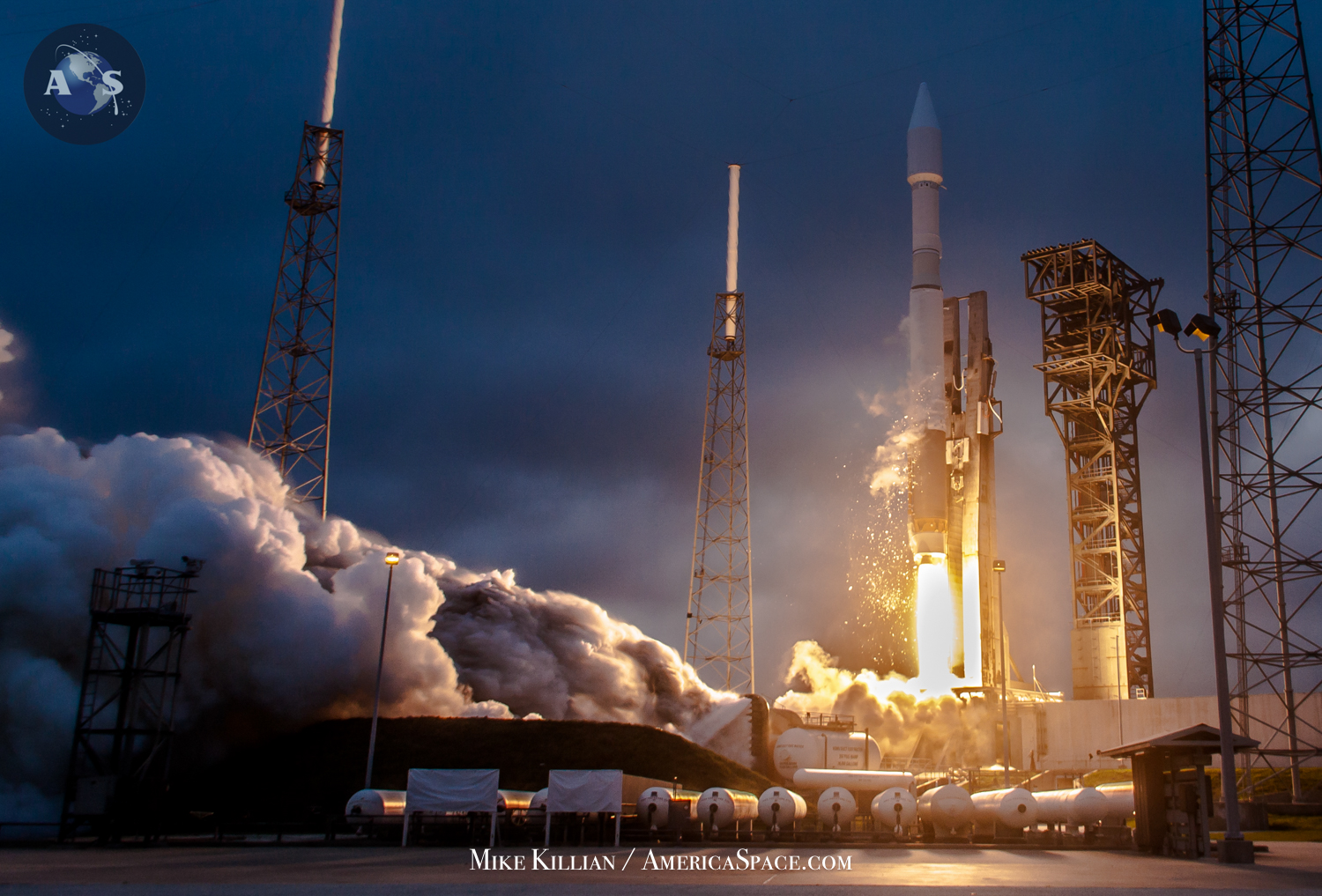
After three scrubbed launch attempts—most recently on Saturday, 5 December, which was called off just before propellant tanking—United Launch Alliance (ULA) has successfully delivered its first payload into orbit bound for the International Space Station (ISS). The Centennial, Colo.-based launch services provider launched its workhorse Atlas-V 401 booster at 4:44 p.m. EST on Sunday, 6 December, from Space Launch Complex (SLC)-41 at Cape Canaveral Air Force Station, Fla., laden with Orbital ATK’s OA-4 Cygnus spacecraft.
Within 21 minutes of departing the Cape, the Cygnus separated from the rocket’s Centaur upper stage and is presently in the process of executing a sequence of rendezvous maneuvers, preparatory to a capture and berthing at the Earth-facing (or “nadir”) port of the space station’s Unity node by the Expedition 45 crew on Wednesday.
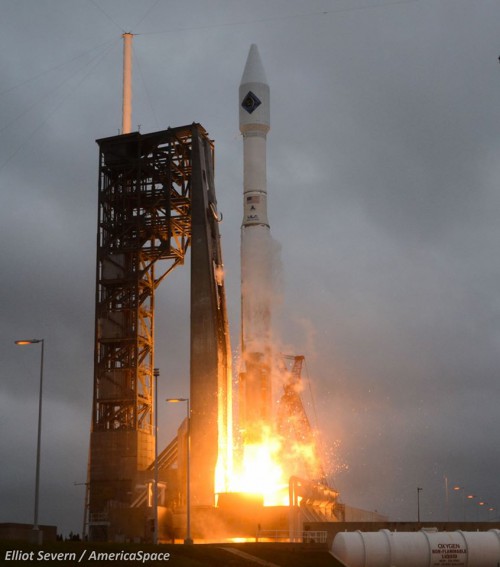
“This launch marks the completion of the critical first step of our go-forward plan for the CRS-1 contract to meet our commitments to NASA,” said Frank Culbertson, President of Orbital ATK’s Space System Group. “Everything looks great in this early stage of the mission. I congratulate the combined NASA, ULA and Orbital ATK team for its hard work to get us to this point, and I look forward to completing another safe and successful flight to the ISS in several days.”
“NASA is delighted at the continued progress made possible by our investment in commercial space,” said NASA Deputy Administrator Dava Newman. “As we celebrate Orbital ATK’s success with its fourth cargo resupply mission to the International Space Station, we look forward to the next milestones of our other commercial partners, including commercial crew launches from American soil in the near future. All these missions are critical to our journey to Mars – a journey we have already begun.”
It has been a frustrating end-of-week and comes at the close of a challenging year. More than 12 months since the loss of the last Cygnus mission—ORB-3, whose Antares booster suffered a catastrophic turbopump failure and exploded, seconds after liftoff, raining debris onto Pad 0A at the Mid-Atlantic Regional Spaceport (MARS) on Wallops Island, Va., last 28 October—Orbital ATK has since contracted with ULA to fly at least two future missions aboard its Atlas V 401. Equipped with a 14-foot-diameter (4-meter) payload fairing, no strap-on boosters, and a single-engine Centaur upper stage, the 401 is the “barebones” version of the Atlas V, yet still carries the impressive capability of delivering up to 21,600 pounds (9,800 kg) of payload into low-Earth orbit.
Today’s launch took off into overcast skies from the Cape’s storied SLC-41 site and marked the 60th Atlas V flight since August 2002 and the 30th mission by the 401 configuration. It also represented the ninth Atlas V flight of 2015, tying with 2014’s record for the greatest number of missions by the highly reliable booster within a single calendar year.
“Congratulations to the team on today’s successful launch! Partnering with Orbital ATK to launch the Cygnus resupply vehicle to the ISS for NASA, a first for ULA, marks a great achievement for the team, and has provided a critical service to the nation and to the crew on the ISS,” said Jim Sponnick, ULA vice president, Atlas and Delta Programs. “In the 12 months since this launch was ordered, the ULA and Orbital ATK teams worked very closely together to integrate the Cygnus with the Atlas launch system, including development of a new structural adapter and also a mission design that includes a 30-minute launch window for this ISS rendezvous mission.”
As described in a previous AmericaSpace article, the OA-4 Cygnus launch was initially scheduled to occur during a 30-minute period from 5:55 p.m. through 6:25 p.m. EST Thursday, 3 December, but despite a sterling effort to make the most of the available “window,” the highly variable Florida weather refused to cooperate and two key Launch Commit Criteria (LCC) violations—namely Thick Clouds and Disturbed Weather—could not be cleared in time to allow the Atlas V to fly. In fact, even the most optimistic forecast of 40-percent-favorable conditions at T-0 had deteriorated to just 10-percent-favorable as the final minutes of Thursday’s window slipped away.
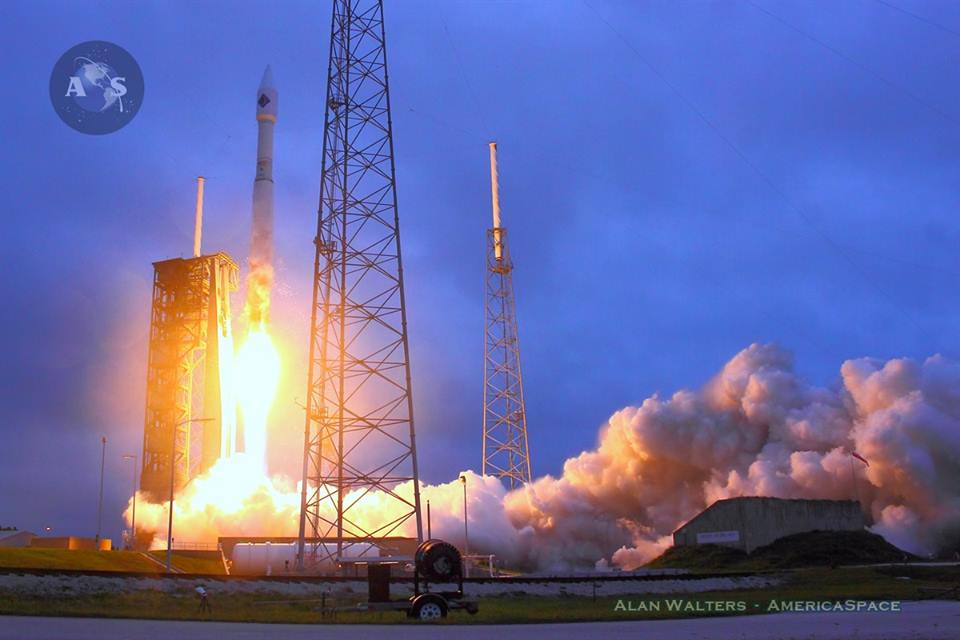
At first, Friday, 4 December offered greater promise, but unacceptable ground-level winds ultimately caused plans to unravel and the second attempt was scrubbed when ULA ran out of available time in the window.
A third try yesterday (Saturday) seemed equally unlikely to achieve any traction, with the 45th Weather Squadron at Patrick Air Force Base predicting only a 20-percent probability of acceptable weather during another 30-minute window which opened at 5:10:58 p.m. “A stationary front over South Florida with high pressure centered over the Mid-Atlantic states will result in a tight pressure gradient over Central Florida and breezy east-northeast winds,” it was noted at 9 a.m. Saturday. “For today’s attempt, the breezy east-northeast winds will result in a coastal shower threat with winds gusting in the upper 20s and low 30s. The primary concerns for launch are Ground Winds and Cumulus Clouds.”
Notwithstanding this pessimistic weather outlook, efforts to prepare the Atlas V booster and its Cygnus payload for flight continued at SLC-41, with countdown operations commencing at T-6 hours and 20 minutes, shortly before 11 a.m. Preparations to fuel the rocket’s Common Core Booster (CCB) with liquid oxygen and the Centaur upper stage with liquid oxygen and hydrogen proceeded normally, as hydraulic and other systems were tested, but the weather grew more intractable. “The latest weather briefing from the Cape suggests just a 20-percent chance of favorable conditions at launch time,” explained AmericaSpace’s Launch Tracker at 11:32 a.m. “There is little confidence that the winds will subside to within the launch criteria.”
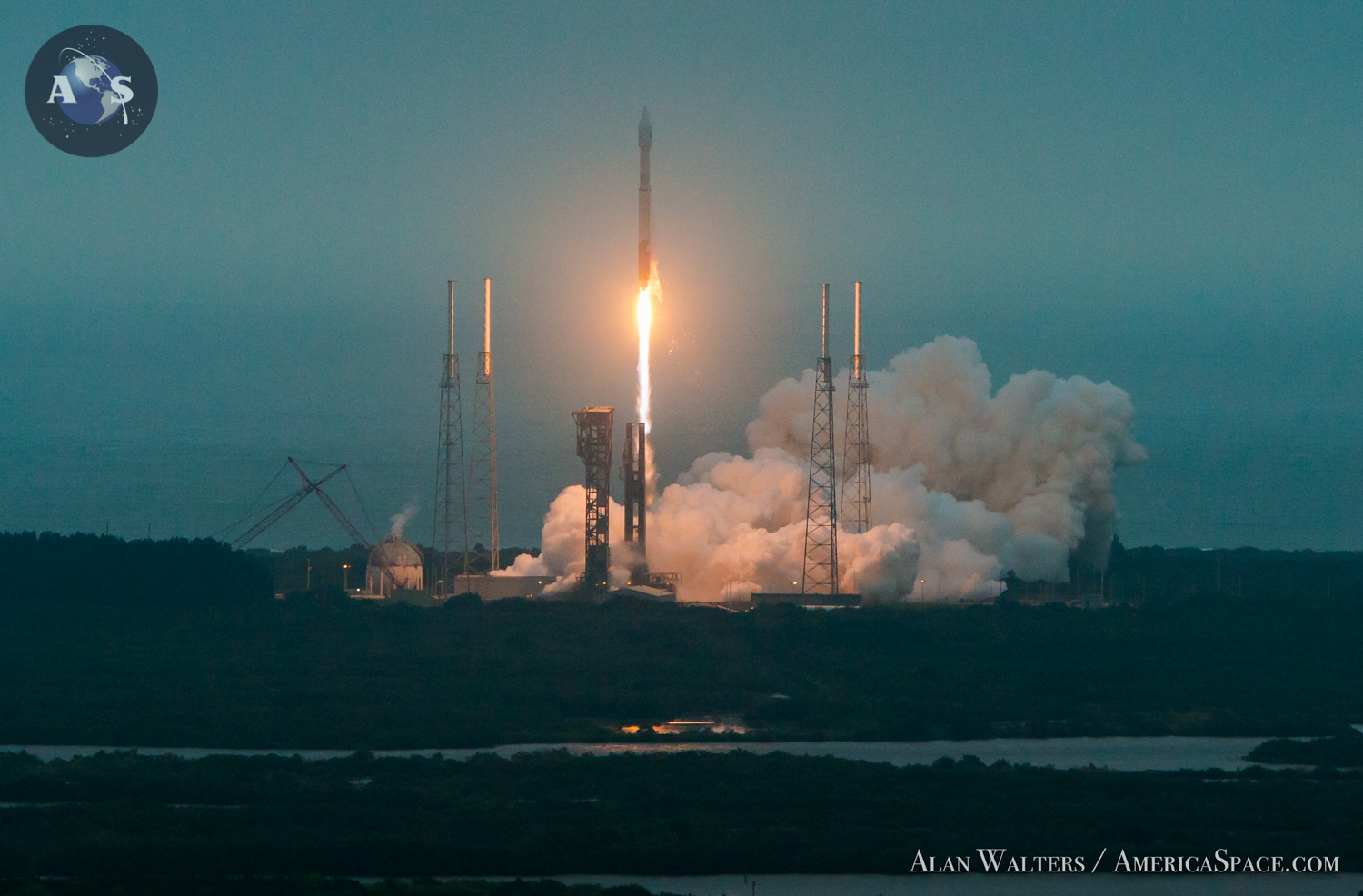
Regular updates were provided, via Twitter, by ULA CEO Tory Bruno. “Operations well underway for a 5:10 p.m. EST window,” he tweeted, shortly after noon. “Probability of Violation (POV) at 80 percent for winds and clouds. Will be monitoring the 3-day weather throughout the day.”
However, it was not to be. At 2:12 p.m. EST, Saturday’s attempt was called off, ahead of the start of cryogenic propellant loading operations. “Scrub,” Mr. Bruno tweeted. “Saving crew rest for better weather on Sunday and Monday.” In an official statement, ULA noted that the scrub was called “due to forecasted high winds.” In addition to the weather and the need to provide the ULA launch teams with a chance for well-earned rest, a “resolved technical issue” related to a ground support problem was highlighted with the vehicle itself. It is understood that the time needed to resolve this issue pushed a Saturday launch attempt to the end of the 30-minute window. Shortly after the scrub, the 45th Space Wing tweeted that another launch attempt would be conducted during a 30-minute window, which opened at 4:44 p.m. EST on Sunday, 6 December.
Certainly, the 24-hour and 48-hour forecasts for the backup launch opportunities on Sunday and Monday were troubled, but showed signs of possible improvement. On Sunday, the pressure gradient was expected to remain “tight,” with wind conditions anticipated to remain breezy, presenting Cumulus Clouds and Ground Winds as potential factors to violate LCC rules and creating a 40-percent likelihood of satisfactory conditions at T-0. This was predicted to improve to 70-percent favorable on Monday, as “the remnants of the [stationary] front to the south lift north with an inverted trough developing off the Florida East Coast,” generating a slightly relaxed pressure gradient and downward-trending winds.
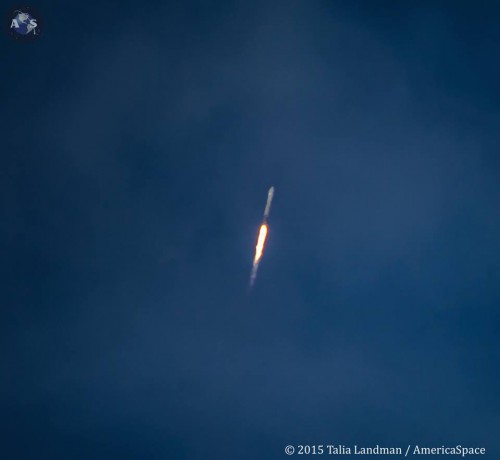
Sure enough, hours before today’s launch attempt the weather forecast did in fact improve dramatically to 70-percent-favorable for liftoff at the scheduled T-0.
For the fourth time in as many days, ULA’s remarkable launch team moved again into formal countdown operations late on Sunday morning. Flight Control systems were initiated, followed by the 3.5-hour process of bringing ground command, control, and communications hardware online and verifying the interfaces between the Atlas V and the Launch Control Center (LCC), including tracking capabilities and the status of the Flight Termination System (FTS). The latter would be required to destroy the rocket in the event of a major accident during ascent. Ahead of fueling, the booster’s propellant lines were purged and conditioned with inert gaseous nitrogen and a “Go” was received to begin chilling and pressurizing the tanks, before loading cryogenic liquid oxygen.
The CCB first stage of the vehicle, equipped with a Russian-built RD-180 engine, is powered uphill by a combination of liquid oxygen and a highly refined form of rocket-grade kerosene, known as “RP-1.” Although the latter is “storable” and was loaded aboard the Atlas V several days ago, cryogenic fueling is undertaken relatively late in the countdown. By mid-afternoon, liquid oxygen was flowing into the CCB and both liquid oxygen and hydrogen were loaded into the Centaur upper stage, whose RL-10C engine would deliver the final, 14-minute “push” to inject the OA-4 Cygnus spacecraft into low-Earth orbit. With loading complete, the vehicle entered “Replenishment Mode,” as boiled-off cryogens were rapidly replaced until shortly before T-0.
Following a final “Go/No-Go” of all stations by Launch Conductor Scott Barney, the Terminal Countdown was initiated and the clock was released from its final, pre-planned “hold” at T-4 minutes at 4:40 p.m. EST. All propellant tanks were pressurized and the FTS was placed onto internal power and armed.
With the winds staying just below violation limits ULA’s 194-foot tall Atlas-V and its RD-180 engine roared to life, unleashing a propulsive yield of 860,000 pounds (390,000 kg) as it lifted off and climbed away from Cape Canaveral AFS and Florida’s Space Coast.
An initial vertical ascent of the pencil-like Atlas away from the Cape was arrested, at T+16 seconds, by a Centaur-commanded pitch, roll, and yaw program maneuver, which established the vehicle onto its proper flight azimuth of 44.4 degrees. Four minutes into the flight, the RD-180 exhausted its propellant and achieved Booster Engine Cutoff (BECO), after which the Centaur’s RL-10C engine—capable of 22,900 pounds (10,390 kg) of thrust—performed a single “burn,” lasting 14 minutes. During this period, the two halves of the 45.3-foot-tall (13.8-meter) Extra-Extended Payload Fairing (XEPF) were jettisoned, exposing the OA-4 Cygnus to the space environment for the first time. This created the proper conditions for insertion into an initial orbit of 124 nautical miles (229.6 km), inclined 51.6 degrees to the equator and the ISS-bound spacecraft separated from the Centaur a little over 21 minutes after departing Cape Canaveral.
These carefully planned and executed steps served to position the OA-4 Cygnus on course for a rendezvous and capture by the space station’s 57.7-foot-long (17.6-meter) Canadarm2 robotic arm on Wednesday, 9 December.
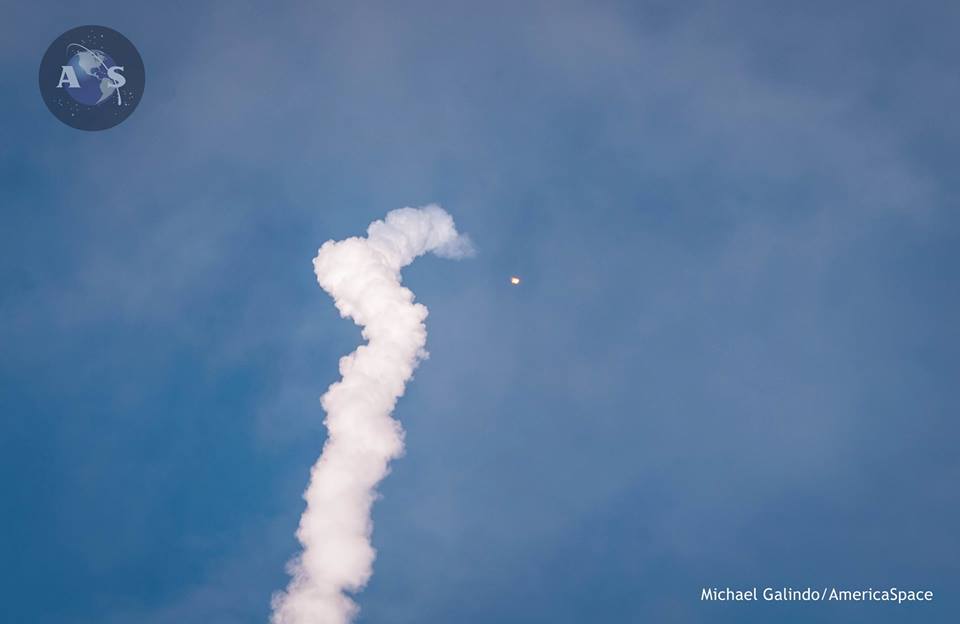
For the first time in history, an unpiloted Visiting Vehicle (VV) will be berthed at the Earth-facing (or “nadir”) Common Berthing Mechanism (CBM) of the station’s Unity node. Although the node was one of the earliest ISS components to reach orbit—launched aboard STS-88 in December 1998—it has been occupied at various points during its 17 years aloft. It provided an early home for Pressurized Mating Adapter (PMA)-3, enabling the shuttle dockings of STS-97 and STS-98 in the winter of 2000-2001, and routinely supported Italian-built MPLMs during several flights prior to and after the Columbia disaster, before being occupied by the Leonardo Permanent Multipurpose Module (PMM) in February 2011. This “permanence” ended in May 2015, when the Leonardo PMM was robotically relocated to a new home on the station’s Tranquility node, allowing the Unity nadir interface to once again become available for visiting cargo craft.
As a result, the ISS now has two berthing locations—one at Unity nadir, the other at the nadir port of the Harmony node—for unpiloted Cygnuses from Orbital ATK, Dragons from SpaceX, and H-II Transfer Vehicles (HTVs) from the Japan Aerospace Exploration Agency (JAXA). This will allow for the simultaneous presence of two VVs and, with SpaceX expected to launch its Commercial Resupply Services (CRS)-8 Dragon mission towards the ISS in early January 2016, the New Year should see both of NASA’s Commercial Orbital Transportation Services (COTS) partners on-station at the same time, for the very first time.
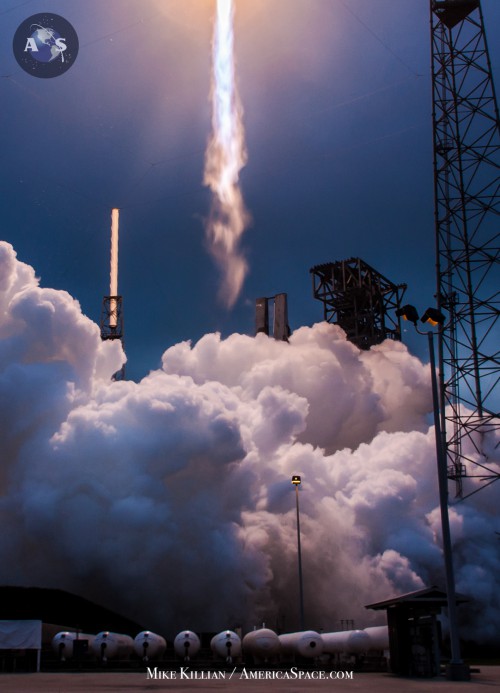
Leading the rendezvous, capture, and berthing of the OA-4 Cygnus on Sunday will be Expedition 45 astronaut Kjell Lindgren, backed-up by Commander Scott Kelly. Both men will be stationed in the multi-windowed cupola. Assisting them will be Japan’s Kimiya Yui, who will be monitoring OA-4 telemetry on the Hardware Control Panel (HCP) and all three U.S. Orbital Segment (USOS) astronauts will support the post-berthing outfitting of the Unity nadir CBM interface, prior to hatch opening and ingress into the spacecraft. Unlike earlier Cygnuses—which remained on-station for between 23 and 37 days—the OA-4 vehicle is expected to remain berthed until 25 January 2016, totaling around 47 days. “The seven weeks Cygnus will spend at the station is to accommodate payload unloading and trash loading,” NASA’s Rob Navias recently told AmericaSpace, “coupled with other vehicle traffic during that timeframe.”
That vehicle traffic is expected to be significant and has already led to an ISS Program-level decision to move the return date of the Soyuz TMA-17M crew—Oleg Kononenko, Kjell Lindgren, and Kimiya Yui—forward by almost two weeks from 22 December to 11 December. Their early landing thus removes the opportunity for a second “direct handover” of ISS crew members in 2015. With Soyuz TMA-19M and its crew of Yuri Malenchenko, Tim Kopra, and Tim Peake expected to arrive at the station on 15/16 December, followed by the departure of Russia’s Progress M-28M and the arrival of the new Progress-MS cargo ships, just before Christmas, not to mention SpaceX’s CRS-8 Dragon in early January, the coming weeks are stacking up to be a busy time for the station.
Each Cygnus mission has been named in honor of an individual who has contributed to the goals of Orbital Sciences Corp. or, more broadly, to the commercial space exploration agenda. The ORB-D (demonstration) mission in September 2013 paid tribute to veteran astronaut and senior Orbital executive G. David Low—a key player in the COTS program, before his untimely passing in February 2008—whilst ORB-1 in January 2014 bore the name of former shuttle commander C. Gordon Fullerton and ORB-2 in July 2014 honored five-time space flyer Janice Voss. Continuing the tradition, the ill-fated ORB-3 paid homage to Project Mercury astronaut Deke Slayton and it was recently revealed that his name would be revived for OA-4, which has become known as “Spaceship Deke Slayton II.”
“With the naming of this spacecraft, we continue our commitment to honor to late Donald “Deke” Slayton, one of the original Mercury Seven astronauts and a champion of America’s commercial space program and leadership in space,” said shuttle and ISS veteran Frank Culbertson, who presently heads Orbital ATK’s Space Systems Group. “We are pleased that the Enhanced Cygnus that bears his name will be able to provide up to 53 percent more in cargo weight to the International Space Station than our previously-flown Standard version.”
Yet there is more significance to the story than a name. Like his mechanized namesake, Slayton was unsuccessful in his first bid to reach space—grounded by a heart murmur in early 1962, just weeks before he was due to fly the Mercury-Atlas-7 (“Delta 7”) mission—before eventually gaining his astronaut’s wings in July 1975, during the Apollo-Soyuz Test Project (ASTP). And to add another twist: Slayton’s Mercury mission, so cruelly snatched from him, would have launched atop an Atlas … an ancestor of the booster which carried Spaceship Deke Slayton II into orbit today.
BELOW: Initial photos from our team today; we will publish an additional photo and video feature in the coming days.
.
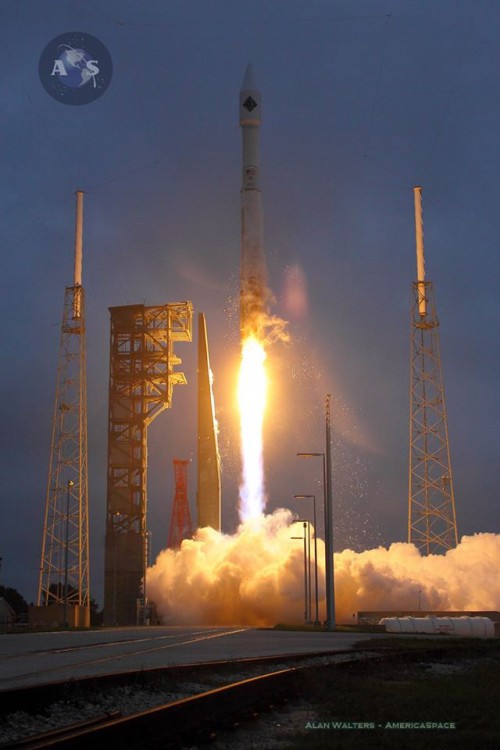
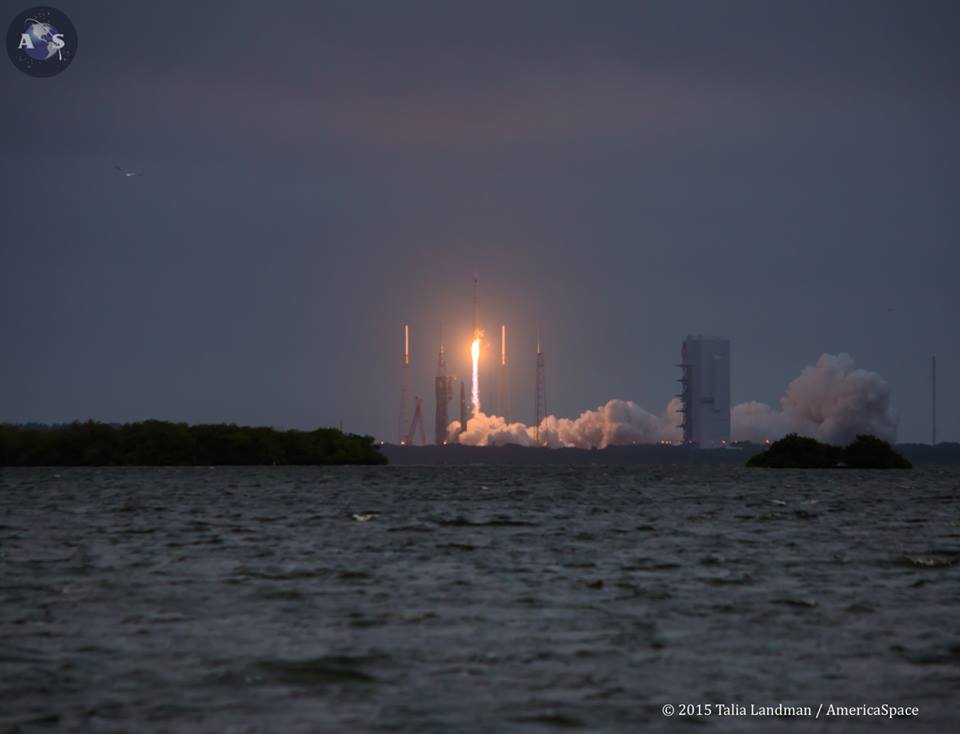
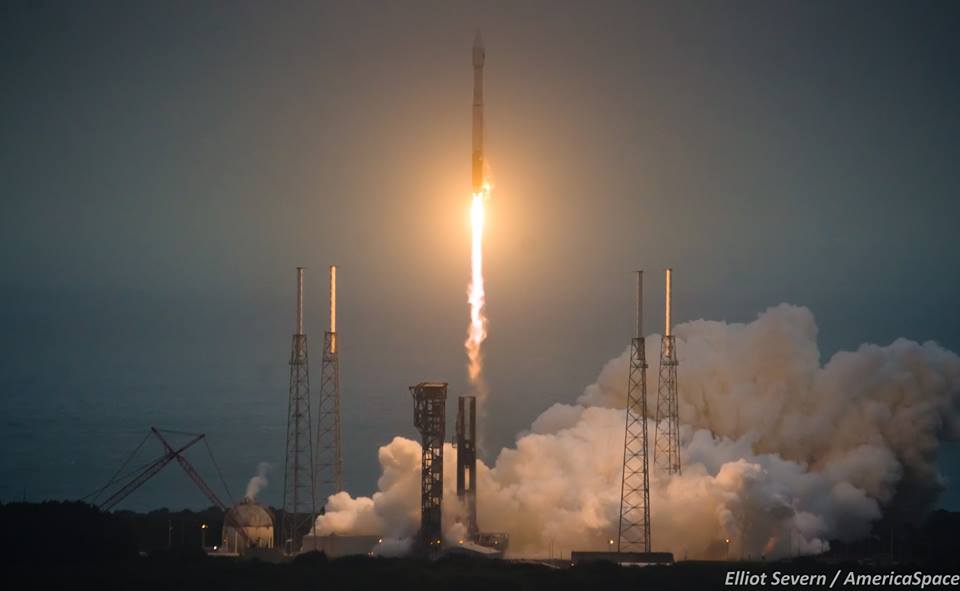
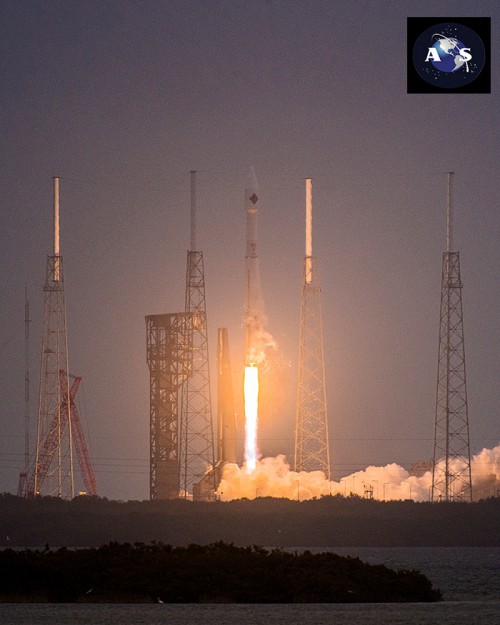
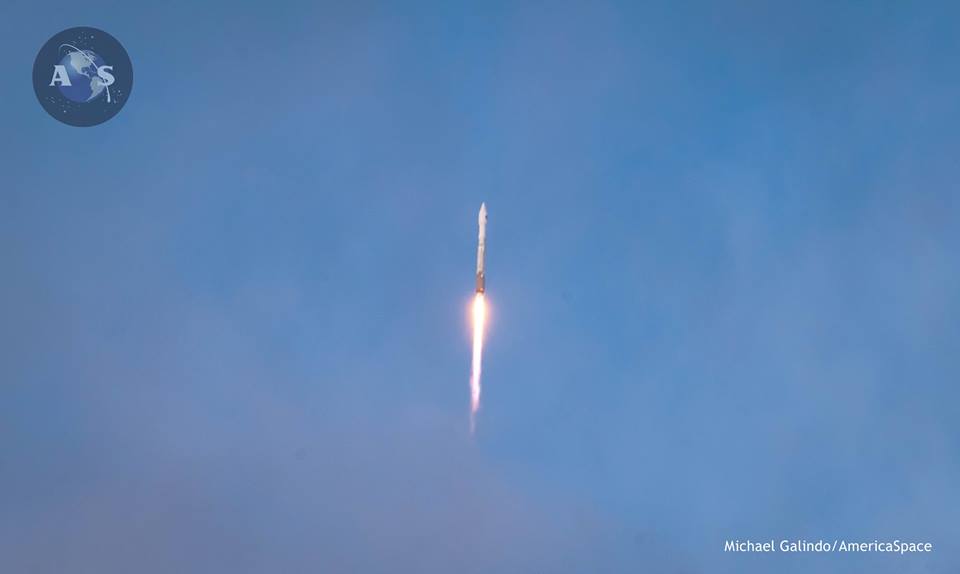
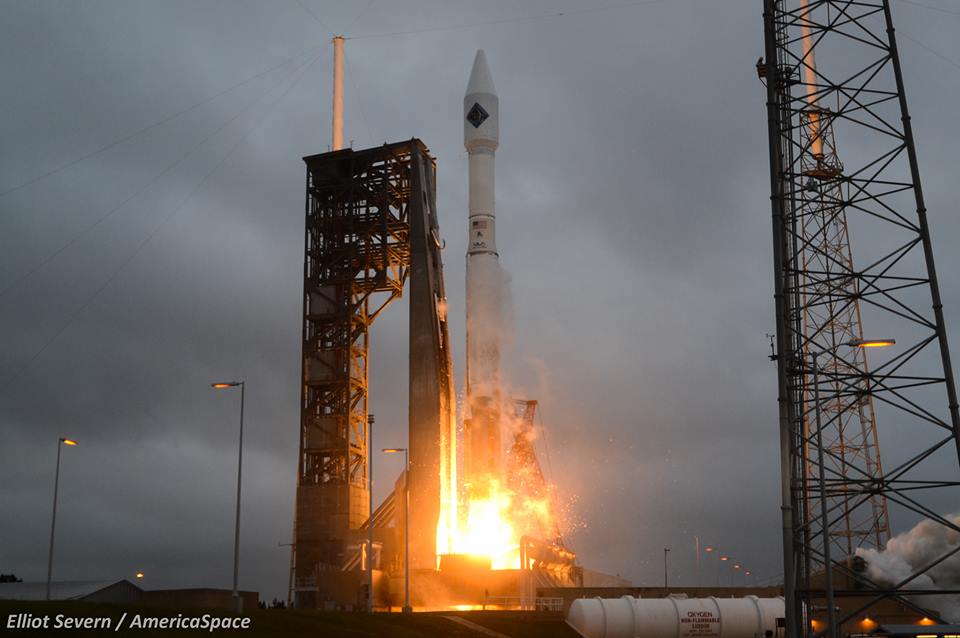
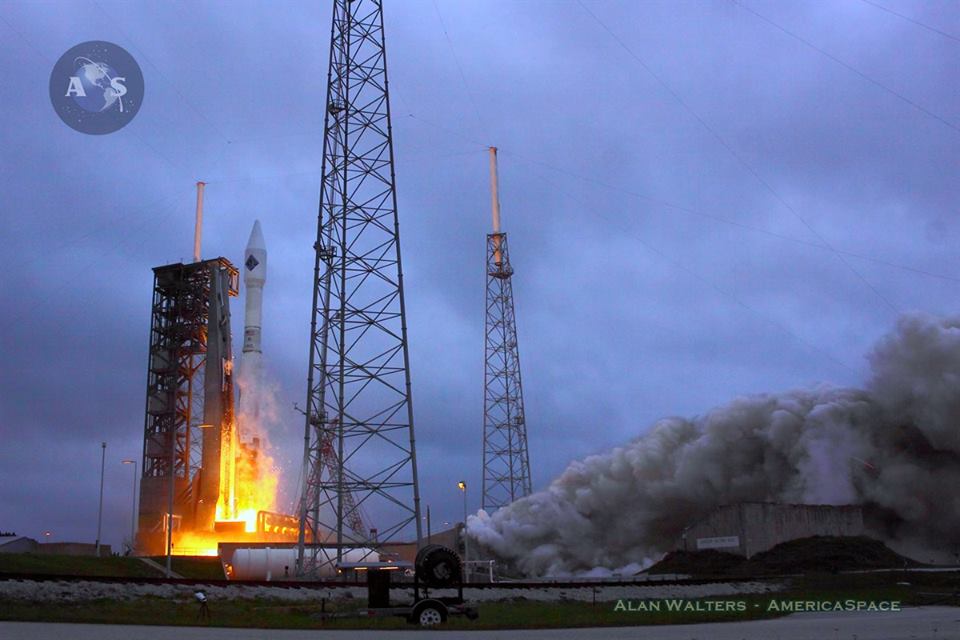
.
Be sure to “Like” AmericaSpace on Facebook and follow us on Twitter: @AmericaSpace
.
Missions » ISS » COTS » CYGNUS » ORB-4 »



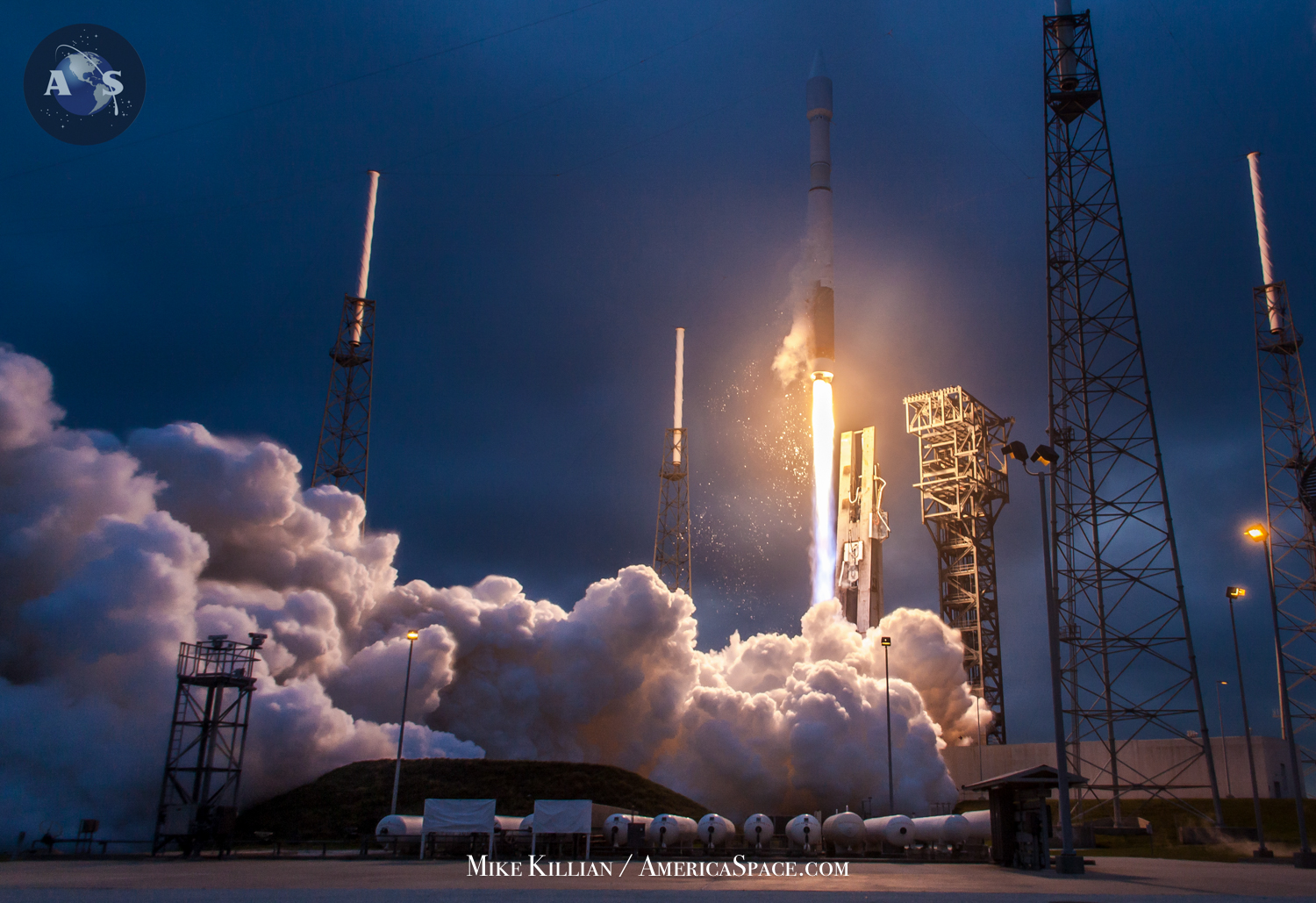
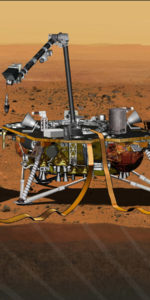
Thank you Ben Evans for the informative article!
The reliable Atlas V should continue to fly for decades, either powered with the RD-180 or powered by another kerolox engine or engines.
Flexibility in getting the Enhanced Cygnus launched uphill to the ISS is a good thing. And such a dissimilar redundant launcher capability for the Enhanced Cygnus and other supply or human carrying spacecraft could help reduce the risks and improve research efficiency in flying the long-term International Space Station mission.
I’m curious….if this was the heaviest Atlas V payload lofted to date, why did it not have the strap on SRBs?
‘Cause the payload was only going to LEO, not geosynchronous transfer or interplanetary escape. This is unusual for the Atlas V Centaur stack.
Alex,
The NAVY’s fleet of MUOS satellites were previously the heaviest ULA Atlas-V payloads to date at 15,000 pounds. Their Atlas-V rockets required the additional capability of strap-on solid boosters because of their 22,000 mile high orbit. Cygnus is now the heaviest Atlas-V payload to date at over 16,500 pounds, but doesn’t require strap-on boosters because the ISS, its target, is in low-Earth orbit (LEO) at about 250 miles high.
According to ULA, the Atlas-V 401, which flies without strap-on boosters, can launch up to 21,600 pounds of payload to LEO.
Your place is valueble for me. Thanks!
my blog post dungeon hunter 5 hack free (Reggie)